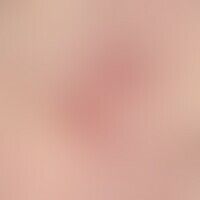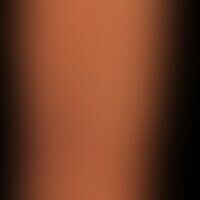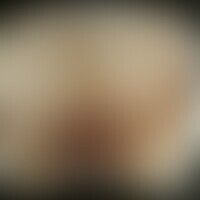Image diagnoses for "Nodules (<1cm)", "red"
269 results with 827 images
Results forNodules (<1cm)red

Dermatitis herpetiformis L13.0
Dermatitis herpetiformis. multiple, disseminated standing, itchy, scratched excoriations on the right arm of a 15-year-old patient. the scratched excoriations are located at sites where grouped vesicles had appeared a few days before. overall, the disease has existed for several months and shows a chronically recurrent course.
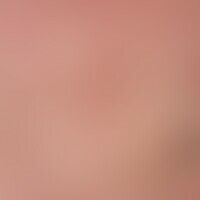
Granuloma anulare disseminatum L92.0

Tinea inguinalis B35.6
Tinea inguinalis: plaques that have existed for several months, coarse lamellar scaling and moderately itchy. Mycological evidence of T. rubrum.

Acroangiodermatitis I87.2
Acroangiodermatitis. detail from the above figure. 0.2-0.4 cm large, initially isolated, then aggregated, deep red to reddish-livid papules develop from the smallest red (haemorrhagic) spots with a smooth surface, which finally confluent to form large plaques.

Lymphomatoids papulose C86.6
Lymphomatoid papulosis: Patient, 73 years of age. Within a few days a red, solid nodule appeared on the nasal wing. In the biopsy atypical dermal infiltrates with CD30-positive blasts. Within a few more days multiple similar nodules spread over the upper trunk.
At control 8 weeks after initial diagnosis the nodule at the nasal fossa is completely regressive leaving a milieu, but a new nodule 5 mm further cranially. The nodules at the trunk are regressive.

Glossitis rhombica mediana K14.2

Acne excoriée L70.8

Papillomatosis cutis lymphostatica I89.0
Papillomatosis cutis lymphostatica:large-area, distally sharply defined, proximally tapering, coarsely indurated, large-area, verrucous plaque with smaller nodules; condition following recurrent erysipelas.

Fibrokeratome acquired digital D23.L
Fibrokeratome, acquired digital. benign, mainly on the fingers, more rarely on the toes, very slowly growing exophytic tumor of the adult with consecutive, displacing nail dystrophy. numerous Beau-Reils transverse furrows as a sign of intermittent growth disturbance.
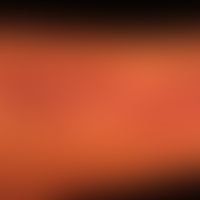
Contact dermatitis allergic L23.0
Eczema, contact eczema, allergic. Acute contact allergy after application of a henna-containing tattoo.

Nevus melanocytic (overview) D22.-
Common melanocytic nevus. type: Halo-nevus, almost complete regression of the melanocytic nevi, which are indicated as light brown spots in the middle of the pigment-less areas.

Lichen planus mucosae L43.8
Lichen planus mucosae. the histological changes are largely identical with those of the LP of the skin. dense lichenoid infiltrate (epitheliotropy usually not as pronounced as in lichen planus of the skin) mainly consisting of lymphocytes; compact orthohyperkeratosis with low parakeratosis.

Scabies nodosa B86.x

Lichen nitidus L44.1
Lichen nitidus: chronically stationary, partly grouped, also linearly arranged (Koebner phenomenon), little itchy, non follicular, 0.1 cm large, white, smooth, round papules.

Leprosy lepromatosa A30.50
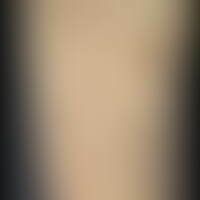
Prurigo simplex subacuta L28.2
Prurigo simplex subacuata: typical distribution pattern of the interval-like itching, scratched, inflammatory papules and plaques.
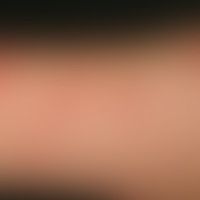
Insect bites (overview) T14.0
Insect bites (overview): acutely occurring, disseminated, itchy blisters and pustules with reddened courtyard.
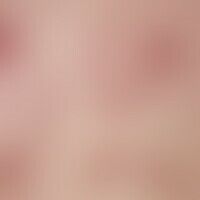
Lichen planus exanthematicus L43.81
Lichen planus exanthematicus. 32-year-old patient with this clinical picture, which developed within a few weeks and disseminated to the trunk and extremities. 0.1-0.2 cm large, roundish or polygonal, smooth, rough, livid-red, in places whitish papules with a shiny surface. There is distinct itching, but this has not yet led to visible scratching effects.
